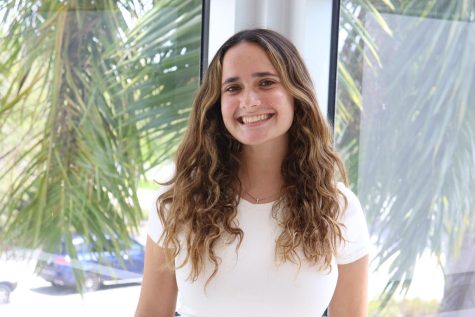Racial Disparities in Missing Persons Cases
October 14, 2021
Missing persons cases heavily rely on timeliness. As the clock ticks down, the memories of witnesses and families fade, making officials doubt the case’s accuracy. Ideally, the media broadcasts missing persons reports in hopes a viewer calls the tip line with more information. Yet when the media heavily reports some missing persons cases versus others, it leads people to question why the other reports go unnoticed.
The media tends to cover stories involving missing white people, particularly women, rather than missing people of color. Also known as “White Woman Syndrome,” missing women who are white, young, upper-middle class and meet conventional beauty standards tend to be more heavily broadcasted than missing persons of color.
“It is a sad fact that law enforcement and the media take some cases less seriously than others, and the perception is that no one will miss these individuals but their families. We know that there is a disparity in media coverage and we need to change that narrative that these are missing mothers and fathers and valuable members of our community,” co-founder of the Black and Missing Foundation Natalie Wilson said.
Founded in 2008, the Black and Missing Foundation strives to bring awareness to missing persons of color while providing resources to educate different minority communities about their safety. They believe that since going missing remains a threat to thousands globally, the media must use their platform to raise awareness for all cases, not just those involving a white victim.
“We have a clearing house, or a website, where we list the individuals. We include where they’re missing from, some details about them and we also share their information on our social media platforms. We…allow the families to have some conversations with the media to help bring awareness to the disappearance,” Wilson said. “Our PR strategy is to equal the playing field and to have equal media coverage across the board, and to saturate our local and national media markets so that our missing [people] can be household names too.”
Through posts on their Instagram, @blackandmissingfdn, Facebook, Twitter and website, BAMFI encourages their followers to follow and repost their content so different communities become involved in finding missing people of color. Black and Missing has assisted in recovering or finding answers for close to 400 people.
When people receive constant news updates, they become more invested and fixated upon finding the missing person. Due to public interest, law enforcement continues to actively search, which in turn increases the person’s chances of survival. The media, knowingly or not, has established a narrative that missing white people are more important than missing people of color.
The recent Gabby Petito case, involving a 22 year-old woman reported missing while on a cross-country road trip and later found dead, sparked national media uproar. Afterwards, the intensity of the media’s coverage of white missing persons cases versus people of color became undeniable.
“Obviously, it’s really sad that [Gabby Petito’s] family is experiencing this, but at the same time, her case has brought light to other cases in the area that have existed prior to her disappearance,” Miami Palmetto Senior High School Amnesty International Sponsor Maribel Pizarro said. “A lot of them were Indigenous women of the area that were essentially overlooked or only were notified within their community, not necessarily within mainstream media and getting the national recognition that her case did.”
There are a few fundamental reasons why there is such a large disparity in media coverage.
Many minority children are initially labelled as “’runaways,” resulting in no AMBER alert notification being sent out to citizens. The wrong label deters the alert because authorities only send out the alert when they believe the child’s whereabouts could result in serious harm or death.
Missing minority adults often get associated with gangs, drugs and criminal activity, resulting in less coverage of their disappearance. Furthermore, it is legally allowed to make oneself unreachable as an adult, meaning no AMBER alert notification can be sent out for anyone over the age of 18. Officials still encourage people to report a missing adult regardless.
“We need our community to get involved, and I also think that as a community, once a child has been reported missing and we get that involvement within our communities, people start making phone calls to the media and making demands from the media that this African American or Hispanic or Brown or Black child is just as important as any other child or any other person,” Wilson said.
After the public became more aware of media outlets gravitating towards reporting white missing persons cases, many people have expressed hope that this pattern will soon end and bring justice to cases that fly under the radar.
“The media is run by people and people are biased. Sometimes you have to check people in their biases…Now that minority groups and people of color are bringing it to the attention and bringing that to the forefront, holding the media accountable is extremely important so that we can see that change needs to happen so we can have equitable news time no matter what the race, no matter what the person,” Pizarro said.
If anyone you know is missing or you would like to anonymously give tips on any missing person cases, reach out using this link.
You may also call your local law enforcement and then call the National Center for Missing & Exploited Children: 800-THE-LOST (800-843-5678).







